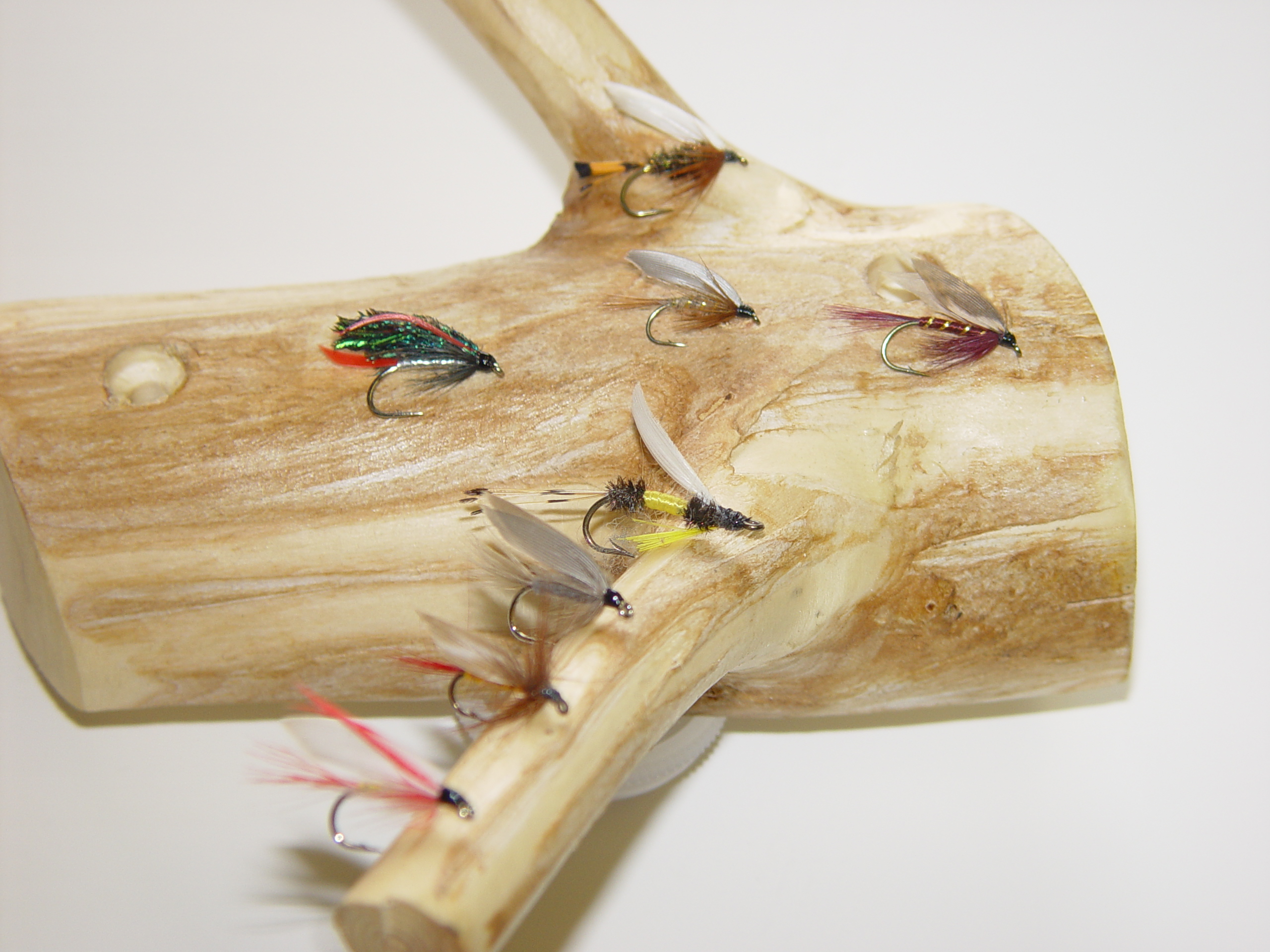
Just in case you’re wondering, the true definition of a “wet” fly is not one which has just been cast into the water. Larger and sleeker than dry flies, yet smaller and more intricately colored than many streamer flies, this style of trout fly comes from a fishing heritage that is centuries old.
The first wet flies were no more than chicken or duck feathers roughly attached to hooks with little form or fashion, yet they would take fish when natural baits would not. As the fish have become more “lure educated” over the decades, the fly tiers and fly casters have kept changing and updating wet fly patterns and fishing methods.
Unfortunately, throughout Maine the style and tradition of angling with wet flies has taken a backseat to trolling streamers and dapping dry flies. I’m here to tell you that during June, early July and September, the vibrant colors of a well-presented and retrieved wet fly will take larger trout than other types of flies. Many of the flies have vivid reds, blues, yellows and greens that resemble no insect or aquatic bait, yet the trout strike them readily. Perhaps the bright colors are like the red cape to a bull, making the swimming form a colorful, taunting irritation that can’t be resisted.
There is an old wet fly pattern called a trout fin, whose red and white, swept-wing style came from an actual trout fin which anglers used to cut from fish they had caught and attach to a hook. The trout fin pattern was and is a very productive offering and should be in each fly box. The red and white of a Parmachene Belle and Royal Coachman; yellow and red of a professor, green and red of a grizzly king, and the blue, red, and yellow of a silver doctor are the rainbow-colored patterns that always seem to catch fish.
Among the more subdued hues of wet flies that should be in each tackle box are the hornberg, hare’s ear, Montreal and muddler patterns. The most common size wet fly hooks 8s,10s and 12s.

Wet flies will take fish on rivers with large holding pools, such as the Aroostook, St. John and Fish rivers, but are just as effective on medium-sized waters like the Presque Isle, Prestile, Little Madawaska and Meduxnekeag streams. I’ve found that wet flies also seem to attract the larger trout from among the gathered schools in the dozens of smaller brooks throughout Aroostook. These small creeks are inlets into larger streams and as the weather warms up the big waters, many trout move into the smaller, cooler feeder brooks and readily take sleek, taunting, undulating wet flies.
Although wet flies will take fish from deep holding pools and from cold spring inlets, they work best when fished through moderate depth riffles and currents. These spots are easy to locate when they are on straight stretches, but don’t overlook U and S curves with shade from overhanging foliage along the brook flowage, and always cast along bank undercuts. Such runs are best fished from the upstream edge such that the fly is retrieved against the current, allowing a realistic swimming motion.
On narrow stretches where back casts are limited, a fly can be roll cast and drawn back directly upstream, but if possible, an angled cross-current cast and retrieve allowing a crossing, downstream angle will always look better to the fish. Striking fish are more solidly hooked and less likely to pull free on crosscurrent retrieves compared to directly upstream retrieves.

The nice thing about wet fly fishing is that it doesn’t require the training, concentration and finesse of dry fly fishing. Novice casters can present a wet fly well enough to attract fish. A 7-1/2- or 8-foot, 5-weight rod with moderate action, and a 5- or 6-weight floating fly line attached to a 7-1/2-foot leader tapered to four pound test tippet will work for most wet fly casting. The wet fly patterns may be more difficult to locate than the rod, but the effort will be worth it.
Since wet fly patterns have lost favor for many, anglers may have to tie their own or find a local fly tier to create a few for your fly box. Along with the several well-known feathered concoctions mentioned previously, I’ve discovered a handful of effective but often overlooked or even unheard of wet fly patterns. Materials and construction directions may be found in dozens of older fly tying tombs or in many cases on line.
During the day when the sun is bright overhead I prefer a brightly hued wet fly such as a professor, Colonel Fuller or a Belgrade. Just after dawn and once the sun sets a drab color pattern like a blue dun, ginger quill, or a March brown often provide consistent trout action. At certain times of the season, wet flies outperform most other styles of baits; now is one of those times.
Give wet fly fishing a try and not only will you keep a bit of heritage alive, but your trout action will pick up as well. It’s a fun way to fish local streams and larger trout will be one of the rewards of colorful wet fly patterns. Remember, pick your lure carefully. Just because it’s in the water doesn’t mean it’s a wet fly.







